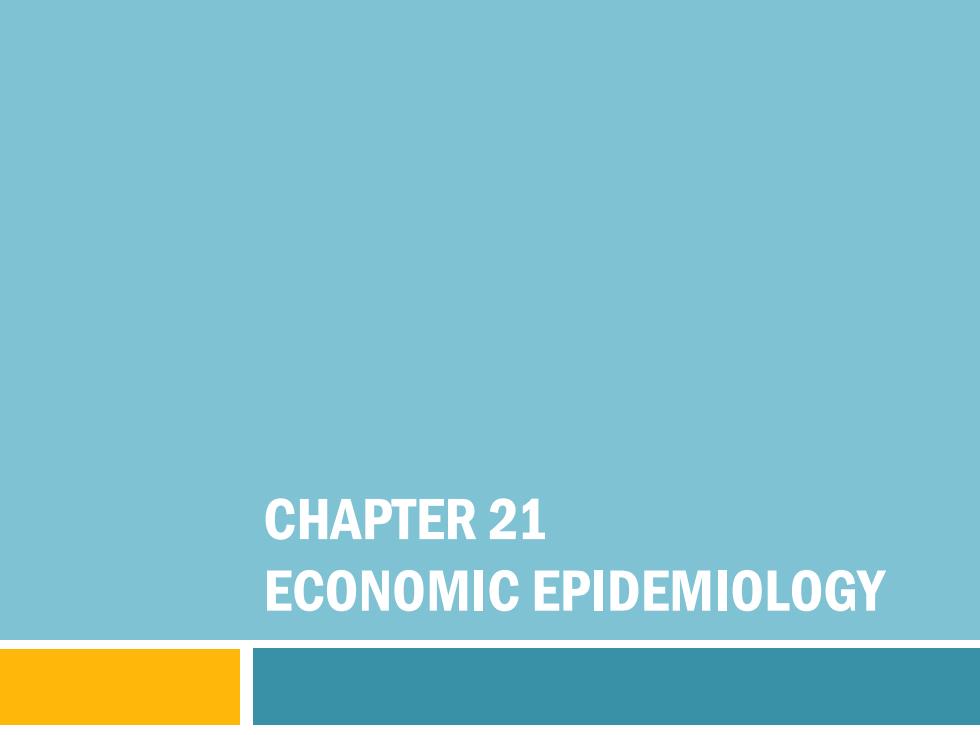
CHAPTER 21 ECONOMIC EPIDEMIOLOGY
CHAPTER 21 ECONOMIC EPIDEMIOLOGY
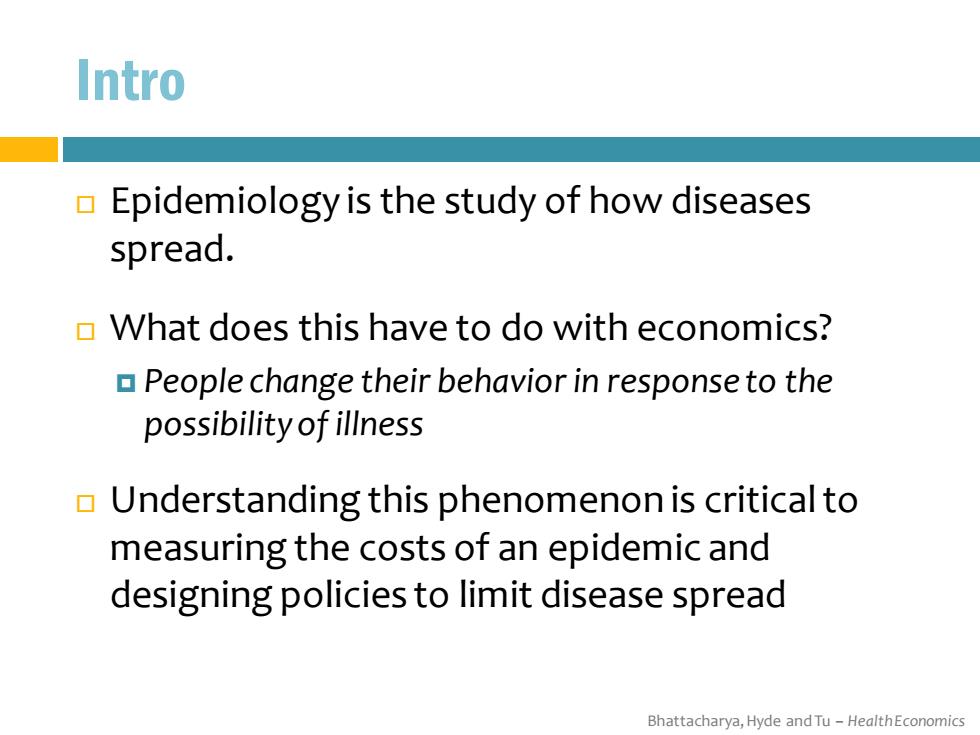
Intro Epidemiology is the study of how diseases spread. What does this have to do with economics? People change their behavior in response to the possibility of illness Understanding this phenomenon is critical to measuring the costs of an epidemic and designing policies to limit disease spread Bhattacharya,Hyde and Tu-HealthEconomics
Bhattacharya, Hyde and Tu – Health Economics Intro Epidemiology is the study of how diseases spread. What does this have to do with economics? People change their behavior in response to the possibility of illness Understanding this phenomenon is critical to measuring the costs of an epidemic and designing policies to limit disease spread
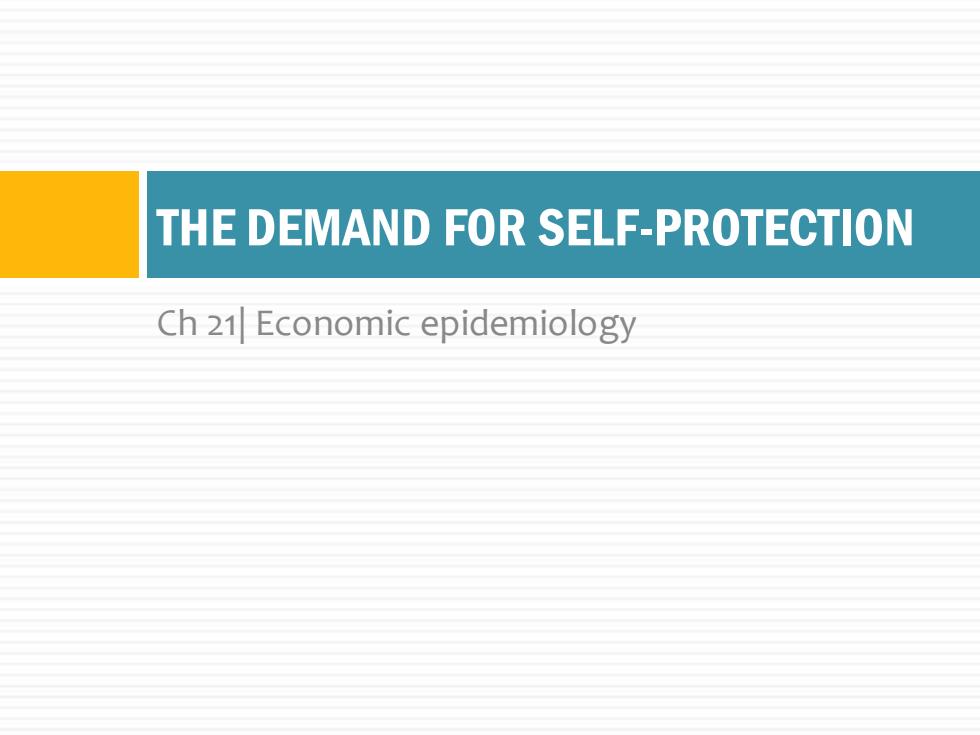
THE DEMAND FOR SELF-PROTECTION Ch 21 Economic epidemiology
Ch 21| Economic epidemiology THE DEMAND FOR SELF-PROTECTION
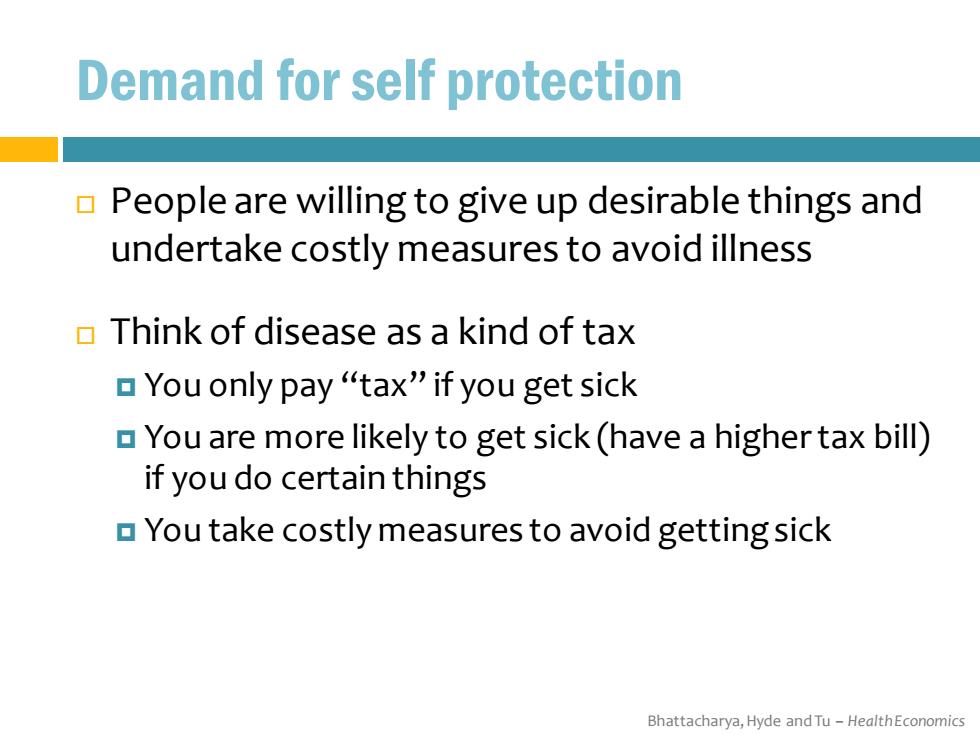
Demand for self protection People are willing to give up desirable things and undertake costly measures to avoid illness Think of disease as a kind of tax You only pay "tax"if you get sick You are more likely to get sick(have a higher tax bill) if you do certain things You take costly measures to avoid getting sick Bhattacharya,Hyde and Tu-HealthEconomics
Bhattacharya, Hyde and Tu – Health Economics Demand for self protection People are willing to give up desirable things and undertake costly measures to avoid illness Think of disease as a kind of tax You only pay “tax” if you get sick You are more likely to get sick (have a higher tax bill) if you do certain things You take costly measures to avoid getting sick
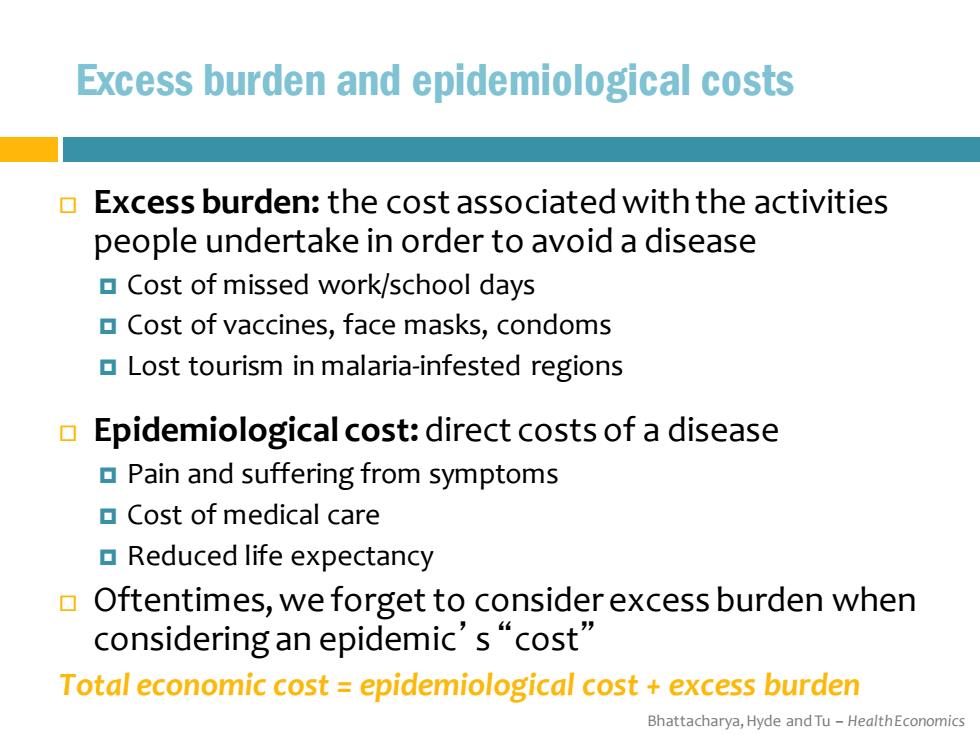
Excess burden and epidemiological costs Excess burden:the cost associated with the activities people undertake in order to avoid a disease Cost of missed work/school days Cost of vaccines,face masks,condoms Lost tourism in malaria-infested regions Epidemiological cost:direct costs of a disease Pain and suffering from symptoms ▣Cost of medical care Reduced life expectancy Oftentimes,we forget to consider excess burden when considering an epidemic's "cost' Total economic cost epidemiological cost excess burden Bhattacharya,Hyde and Tu-HealthEconomics
Bhattacharya, Hyde and Tu – Health Economics Excess burden and epidemiological costs Excess burden: the cost associated with the activities people undertake in order to avoid a disease Cost of missed work/school days Cost of vaccines, face masks, condoms Lost tourism in malaria-infested regions Epidemiological cost: direct costs of a disease Pain and suffering from symptoms Cost of medical care Reduced life expectancy Oftentimes, we forget to consider excess burden when considering an epidemic’ s “cost” Total economic cost = epidemiological cost + excess burden
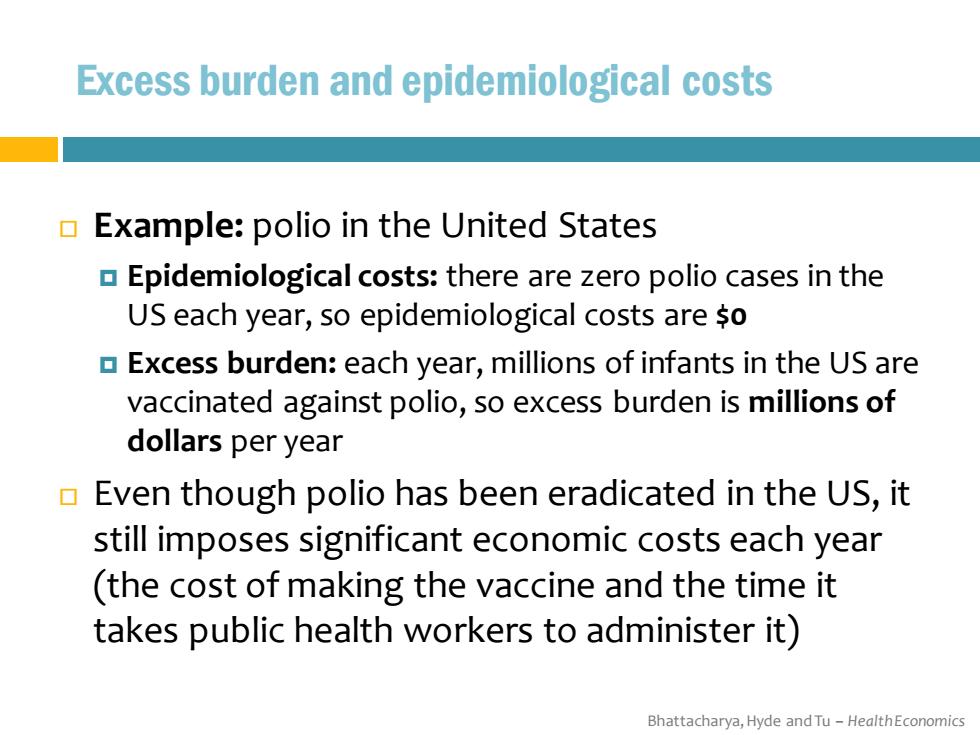
Excess burden and epidemiological costs o E Example:polio in the United States Epidemiological costs:there are zero polio cases in the US each year,so epidemiological costs are so Excess burden:each year,millions of infants in the US are vaccinated against polio,so excess burden is millions of dollars per year Even though polio has been eradicated in the US,it still imposes significant economic costs each year (the cost of making the vaccine and the time it takes public health workers to administer it) Bhattacharya,Hyde and Tu-HealthEconomics
Bhattacharya, Hyde and Tu – Health Economics Excess burden and epidemiological costs Example: polio in the United States Epidemiological costs: there are zero polio cases in the US each year, so epidemiological costs are $0 Excess burden: each year, millions of infants in the US are vaccinated against polio, so excess burden is millions of dollars per year Even though polio has been eradicated in the US, it still imposes significant economic costs each year (the cost of making the vaccine and the time it takes public health workers to administer it)
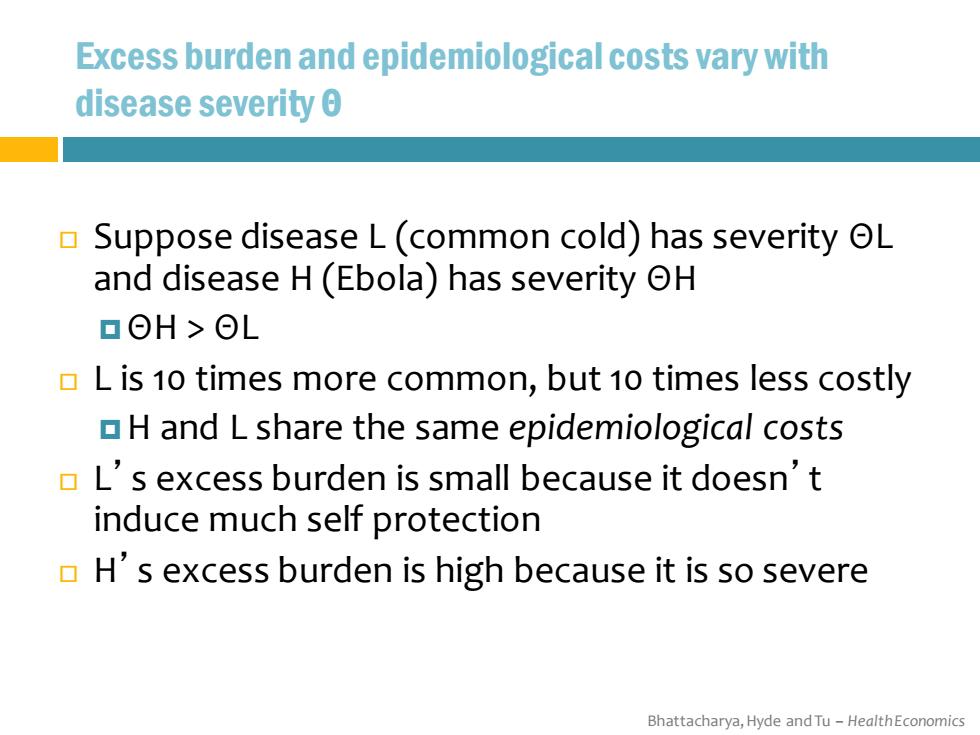
Excess burden and epidemiological costs vary with disease severity 0 日 Suppose disease L(common cold)has severity OL and disease H(Ebola)has severity H aΘH>ΘL L is 10 times more common,but 10 times less costly H and L share the same epidemiological costs L's excess burden is small because it doesn't induce much self protection H's excess burden is high because it is so severe Bhattacharya,Hyde and Tu-HealthEconomics
Bhattacharya, Hyde and Tu – Health Economics Excess burden and epidemiological costs vary with disease severity Θ Suppose disease L (common cold) has severity ΘL and disease H (Ebola) has severity ΘH ΘH > ΘL L is 10 times more common, but 10 times less costly H and L share the same epidemiological costs L’s excess burden is small because it doesn’t induce much self protection H’s excess burden is high because it is so severe
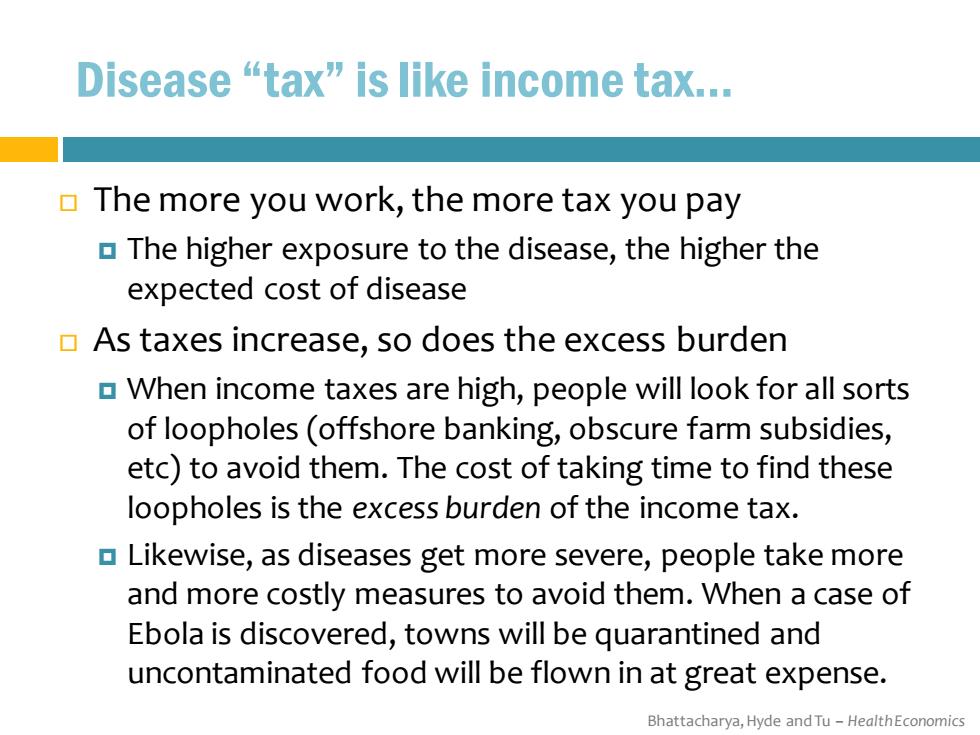
Disease“tax”is like income tax. The more you work,the more tax you pay The higher exposure to the disease,the higher the expected cost of disease As taxes increase,so does the excess burden When income taxes are high,people will look for all sorts of loopholes(offshore banking,obscure farm subsidies, etc)to avoid them.The cost of taking time to find these loopholes is the excess burden of the income tax. Likewise,as diseases get more severe,people take more and more costly measures to avoid them.When a case of Ebola is discovered,towns will be quarantined and uncontaminated food will be flown in at great expense. Bhattacharya,Hyde and Tu-HealthEconomics
Bhattacharya, Hyde and Tu – Health Economics Disease “tax” is like income tax… The more you work, the more tax you pay The higher exposure to the disease, the higher the expected cost of disease As taxes increase, so does the excess burden When income taxes are high, people will look for all sorts of loopholes (offshore banking, obscure farm subsidies, etc) to avoid them. The cost of taking time to find these loopholes is the excess burden of the income tax. Likewise, as diseases get more severe, people take more and more costly measures to avoid them. When a case of Ebola is discovered, towns will be quarantined and uncontaminated food will be flown in at great expense
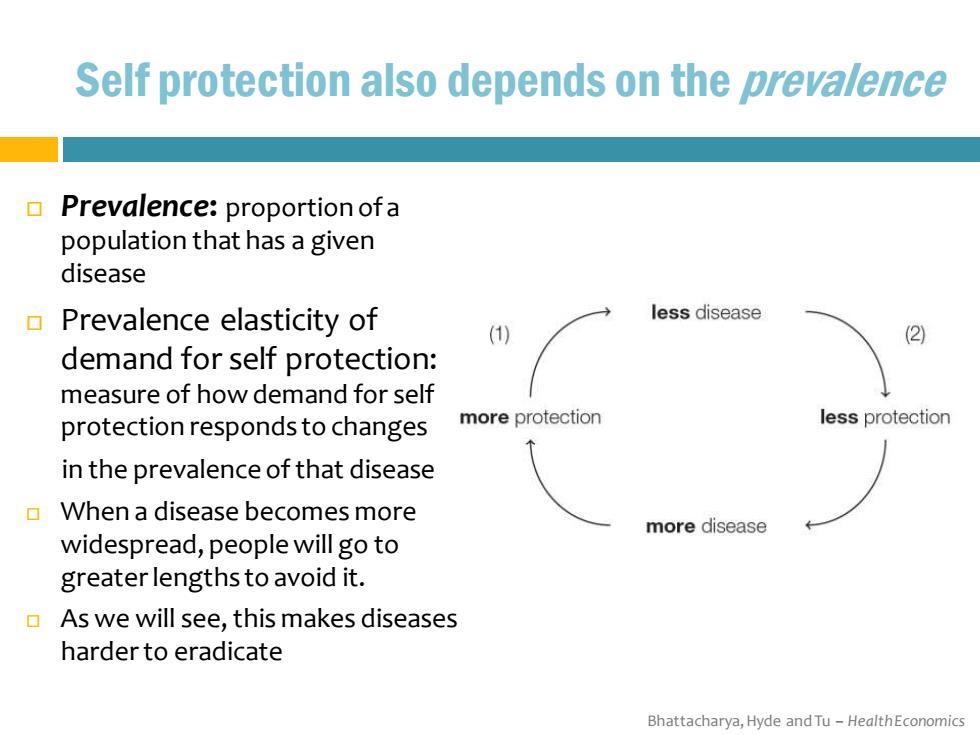
Self protection also depends on the prevalence Prevalence:proportion of a population that has a given disease Prevalence elasticity of less disease () (2) demand for self protection: measure of how demand for self protection responds to changes more protection less protection in the prevalence of that disease When a disease becomes more more disease widespread,people will go to greater lengths to avoid it. As we will see,this makes diseases harder to eradicate Bhattacharya,Hyde and Tu-HealthEconomics
Bhattacharya, Hyde and Tu – Health Economics Self protection also depends on the prevalence Prevalence: proportion of a population that has a given disease Prevalence elasticity of demand for self protection: measure of how demand for self protection responds to changes in the prevalence of that disease When a disease becomes more widespread, people will go to greater lengths to avoid it. As we will see, this makes diseases harder to eradicate
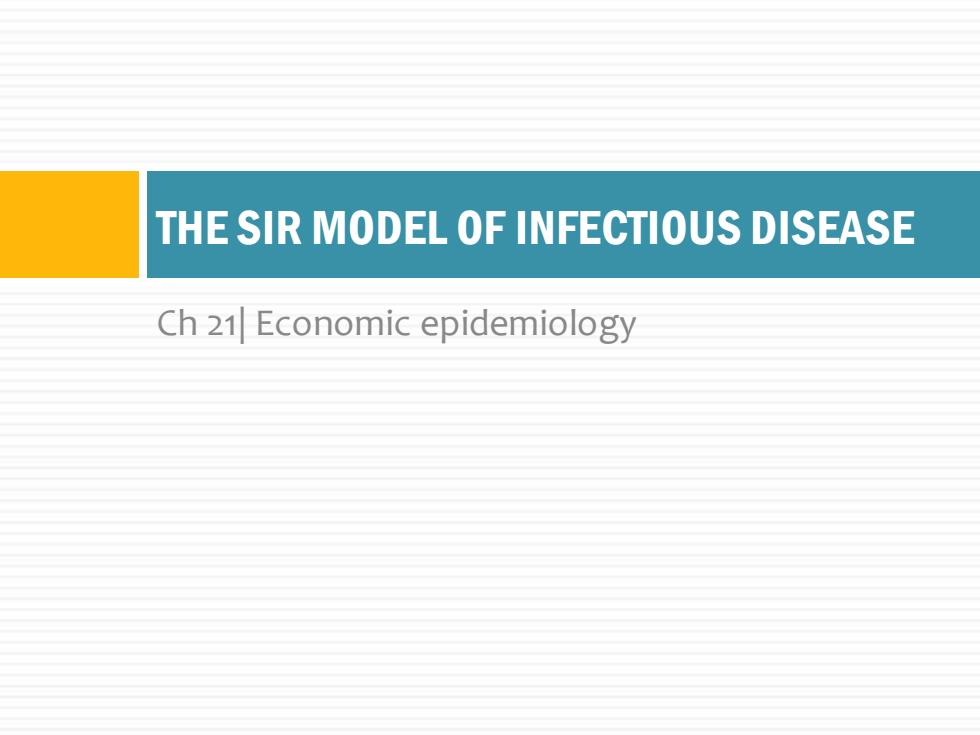
THE SIR MODEL OF INFECTIOUS DISEASE Ch 21 Economic epidemiology
Ch 21| Economic epidemiology THE SIR MODEL OF INFECTIOUS DISEASE